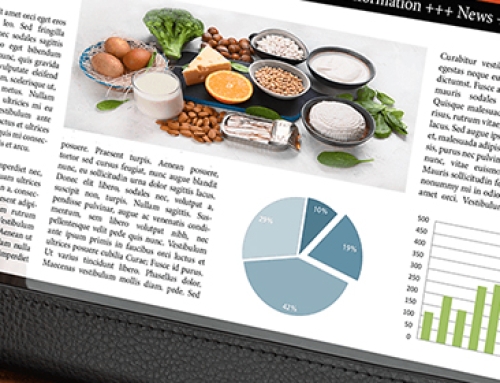According to the first survey in Italy, one third of groceries purchased online do not carry a nutrition facts label.
In recent years there has been a rapid surge in online sales of groceries. While this may once have seemed a widespread trend mainly among young working people in search of convenience and swift delivery, social containment measures enforced during the COVID-19 pandemic have accelerated the phenomenon, bringing about a massive shift of consumers from regular supermarkets to online shopping and home delivery. Nonetheless, as technology directs our purchasing and consumption habits in favour of more rapid solutions, it must not fall short in terms of consumer health protection.
As in the case of physical stores, it is mandatory also in the e-commerce sector to attach nutritional labelling to prepackaged foods. The accuracy of the information provided on the label is essential in guiding consumer food choices and preventing food-related chronic diseases.

As in the case of physical stores, it is mandatory also in the e-commerce sector to attach nutritional labelling to prepackaged foods. A recent survey by the IZSVe, published in the Journal of Near Infrared Spectroscopy, investigated the accuracy of nutritional labelling on groceries purchased online, using near infrared spectroscopy (NIR) to determine whether the values declared on the labels were correct and in compliance with EU tolerance limits. Out of a sample of 103 food products (80 processed and 23 unprocessed foods) sold on a well-known e-commerce platform, surprisingly 35% of processed foods did not carry a nutrition facts label on the packaging.. Moreover, 35.8% of samples showed at least one value outside the tolerance range.
A recent survey by the Experimental Chemistry Laboratory – SCS8 at IZSVe, published in the scientific journal Journal of Near Infrared Spectroscopy, investigated the accuracy of nutritional labelling on groceries purchased online, using near infrared spectroscopy (NIR) to determine whether the values declared on the labels were correct and in compliance with EU tolerance limits.
The numbers
Out of a sample of 103 food products (80 processed and 23 unprocessed foods) sold on a well-known e-commerce platform, surprisingly 35% of processed foods did not carry a nutrition facts label on the packaging.
The samples that did have checkable labels belonged to 53 different foodstuffs, divided into meat-, cheese- and fish-based products. Eight different nutritional values were quantified (energy in Kcal, energy in KJ, total fat, saturated fat, carbohydrates, sugar, proteins, salt), resulting in a total of 424 measurements.
Comparison of the test values with those provided on the label showed that approximately 74.5% of declared values were consistent with the test results, 11.3% were slightly outside the tolerance limits, 7.5% were outside the tolerance limits, while 6.6% were totally incorrect. In sum, 35.8% of samples showed at least one value outside the tolerance range. Specifically, saturated fats were found to fall most frequently outside the tolerance levels set by EU legislation.
Open questions
Most of the analysed products came from small meat and dairy producers who mainly sold their goods locally and who had only recently started distributing their products online. No errors were instead found in the small number of samples from large, more structured companies (e.g. major distribution groups). The study thus provides a snapshot of the presence/absence of nutritional information on food products purchased on e-commerce sites, together with its completeness, consistency and compliance, highlighting the inconsistencies that may be found in locally produced products.
As stated by Roberto Piro, director of SCS8 – Food Industry Enhancement – and senior author of the study, “Food and grocery e-commerce has recently experienced a major surge. However, the rapid advent of new sales channels has not been accompanied by an adequate level of training and information for people working in the sector”.
Independent food producers who sell their products online should be more aware of legislative requirements and the major e-commerce platforms should undertake to provide the nutritional characteristics of all food products.
Lastly, the survey also revealed aspects relating to the organization of official controls. Since the health authorities responsible for food safety have territorial competence, whereas e-commerce has no geographical boundaries, the question of which regulatory body should check foodstuffs produced in one area but sold throughout Italy remains a moot point.
Leggi l’articolo scientifico su Journal of Near Infrared Spectroscopy »






